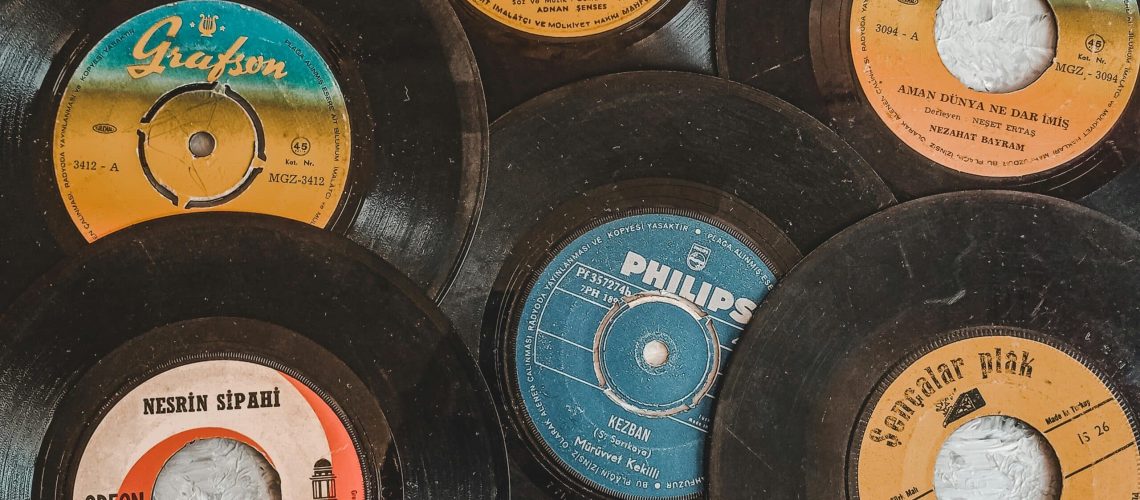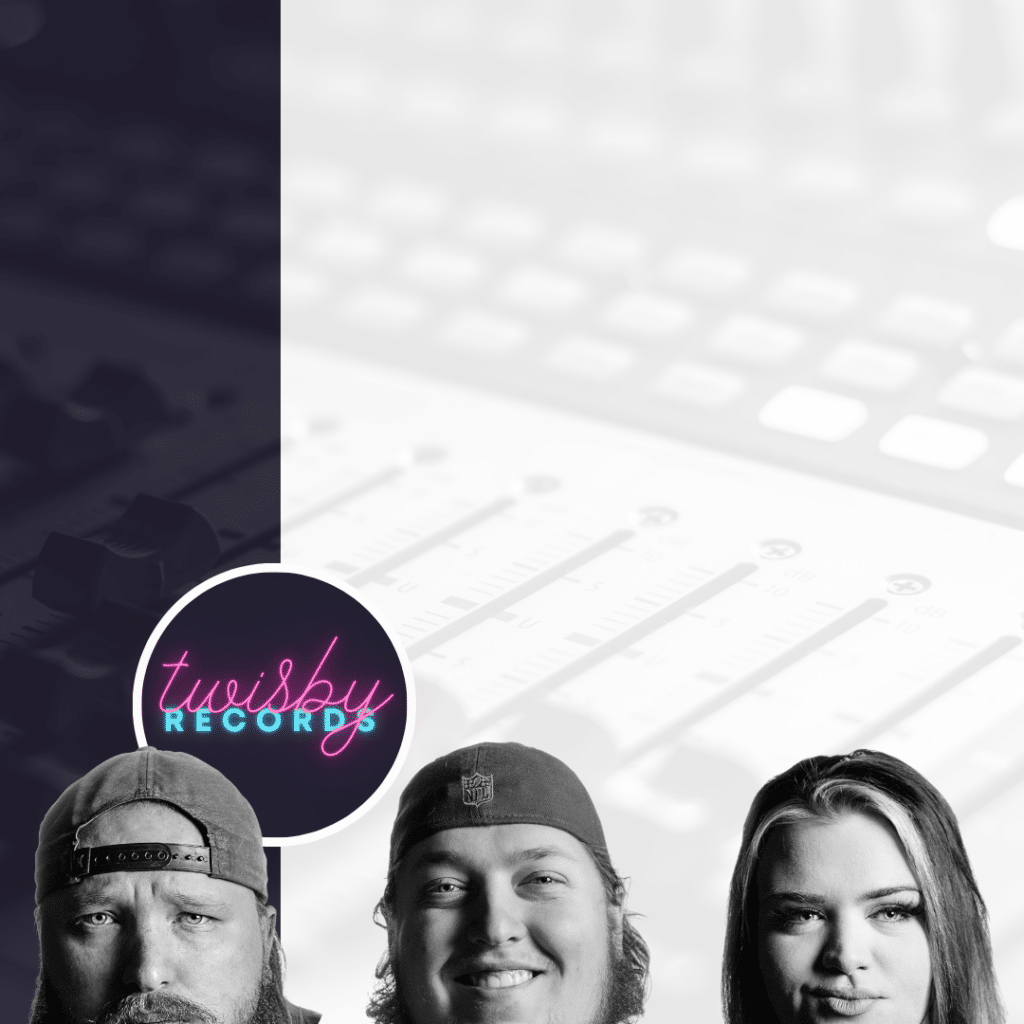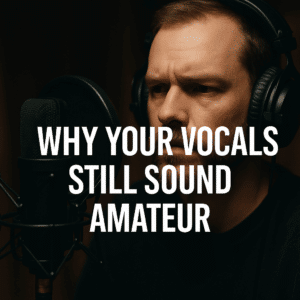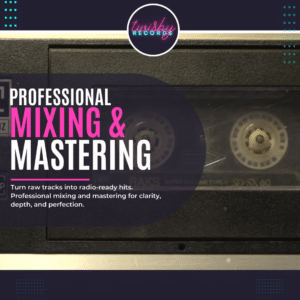Curious about what an EP is and why it’s such a powerful tool for artists? Whether you’re an independent musician or a music enthusiast, understanding EPs can open up a world of creative possibilities. In this guide, we’ll break down everything you need to know about EPs—from what they are and how they’ve evolved in the music industry to step-by-step strategies for successfully releasing your own EP. Get ready to discover how this versatile format can elevate your music career and leave a lasting impression on your audience.
Table of Contents
What is an EP?
An EP, short for “extended play,” is a music release that falls between a single and a full-length album in terms of length and content. Typically, an EP includes 4 to 6 tracks and has a runtime of around 15 to 30 minutes, offering more material than a single but without the extensive commitment of an album.
The term “EP” originated in the vinyl record era, where it described records that played longer than a standard single but shorter than a traditional album. Today, EPs serve as a versatile format for artists to showcase their creativity, experiment with new sounds, and engage their audience without the time and financial investment of producing a full album.
Modern EPs are commonly used to test new musical directions, bridge the gap between larger releases, or introduce an artist’s work to new listeners. With the rise of streaming platforms, EPs have become a crucial tool for staying relevant in a fast-paced music industry, offering artists a chance to release cohesive and impactful projects more frequently.
What Does “EP” Mean in the Modern Music Industry?
In the modern music industry, the term “EP” has evolved to reflect the changing landscape of music production and consumption. While it originally referred to the physical format of a record, today it signifies a creative and strategic choice for artists.
An EP allows musicians to share a cohesive body of work that showcases their talent and storytelling without the pressure of creating a full album. With the advent of digital streaming platforms, the EP format has gained renewed importance, as listeners increasingly favor shorter, more digestible releases.
Unlike albums, which are often seen as monumental statements in an artist’s career, EPs provide flexibility and adaptability. They are frequently used for:
- Testing New Sounds: Artists experiment with different styles or genres without committing to a full album.
- Maintaining Momentum: EPs keep artists in the public eye between larger projects, ensuring consistent engagement with their audience.
- Targeting Specific Audiences: The shorter format allows artists to craft themed releases tailored to niche audiences or specific moments, such as holidays or events.
In a digital world dominated by streaming metrics and playlist placements, EPs have also become a strategic tool. A well-crafted EP can serve as an entry point for new fans, a stepping stone to larger projects, or even a viral hit that lands a spot on a popular playlist.
Why Artists Release EPs: Strategic Benefits
EPs have become a powerful tool for artists, offering unique advantages that go beyond just releasing music. Whether you’re an independent musician or a chart-topping artist, the strategic benefits of EPs are undeniable:
1. Creative Freedom
An EP allows artists to explore new sounds, experiment with fresh ideas, or dive into a cohesive theme without the constraints of a full album. This format is perfect for showcasing versatility or testing a new musical direction.
2. Cost-Effective Production
Producing an EP is typically less expensive than creating a full-length album. With fewer songs to record, mix, and master, artists can deliver high-quality work while staying within budget. This makes EPs especially appealing for independent artists with limited resources.
3. Audience Engagement
EPs help artists stay connected with their audience by releasing music more frequently. In today’s fast-paced music world, where listeners expect constant content, an EP bridges the gap between larger projects and keeps fans excited.
4. Testing the Waters
For newer artists or those considering a stylistic shift, an EP is an excellent way to test audience reactions. The feedback from an EP release can inform decisions for future singles, albums, or even live performances.
5. Building Momentum
EPs act as stepping stones to bigger projects, generating buzz and anticipation. Releasing an EP can set the stage for a full album or serve as a way to reintroduce yourself to the industry after a hiatus.
6. Playlist Potential
In the era of streaming, EPs are perfectly sized for playlist placements. A standout track from an EP can catch the attention of curators, increasing the likelihood of discovery by new listeners and driving streams across the entire release.
7. Niche Marketing Opportunities
EPs can target specific audiences or themes, such as seasonal releases or genre-specific projects. This targeted approach makes it easier for artists to build connections with dedicated fan bases.
By balancing creativity, strategy, and audience connection, EPs give artists a unique platform to grow their careers and make a lasting impact. Whether you’re just starting out or looking to revitalize your sound, an EP can be a game-changer in the modern music landscape.
EP vs. LP: What’s the Difference?
| Aspect | EP (Extended Play) | LP (Long Play) |
|---|---|---|
| Length and Tracks | 4 to 6 tracks, 15–30 minutes runtime | 8 to 12+ tracks, 30+ minutes runtime |
| Purpose | Flexible for experimentation, audience engagement, or testing | A major artistic statement defining an artist’s identity |
| Cost and Effort | Lower production costs, quicker to create | Higher costs, significant time investment |
| Listener Engagement | Ideal for streaming, playlist-friendly, encourages repeat play | Immersive experience, appeals to deep connections |
| Release Strategy | Often a teaser or precursor to larger projects | Culmination of artistic vision, accompanied by promotion |
Understanding the distinction between an EP (Extended Play) and an LP (Long Play) is crucial for artists and music enthusiasts alike. While both formats showcase an artist’s work, they serve different purposes and have unique characteristics:
1. Length and Number of Tracks
- EP (Extended Play): Typically includes 4 to 6 tracks, with a total runtime of about 15 to 30 minutes. It’s longer than a single but shorter than an album, making it a concise yet impactful format.
- LP (Long Play): Refers to a full-length album with 8 to 12 or more tracks and a runtime usually exceeding 30 minutes. An LP offers a comprehensive musical experience, often telling a more elaborate story.
2. Purpose
- EP: Designed for flexibility, EPs are often used for experimentation, introducing new sounds, or maintaining audience engagement between larger projects. They’re a great choice for testing the waters or releasing focused, themed projects.
- LP: Considered a major artistic statement, an LP represents a significant investment of time, creativity, and resources. Albums are often used to define an artist’s identity or mark a pivotal moment in their career.
3. Cost and Production Effort
- EP: Requires less time and money to produce, making it accessible for independent artists or those exploring new directions.
- LP: Demands a greater commitment in terms of songwriting, recording, and production, often leading to higher costs and longer timelines.
4. Listener Engagement
- EP: Ideal for today’s streaming-focused audience, where shorter releases fit seamlessly into playlists and encourage repeat listening.
- LP: Appeals to fans seeking a deeper connection with an artist, offering a more immersive experience that’s often consumed in a single sitting.
5. Release Strategy
- EP: Often used as a teaser or precursor to an LP, building momentum and setting the stage for a larger project.
- LP: Typically represents a culmination of artistic vision and effort, often accompanied by extensive promotion and touring.
By understanding these differences, artists can choose the format that best aligns with their goals and resources. Whether you’re aiming to make a splash with an EP or solidify your legacy with an LP, both play an essential role in shaping your musical journey.
The Flexibility of EP Releases Across Genres
One of the most remarkable aspects of EPs is their adaptability. This versatile format transcends genres, allowing artists to experiment and connect with diverse audiences in unique ways. From pop to jazz, EPs offer the perfect platform for creative expression and strategic growth.
1. Experimentation Across Genres
EPs allow artists to step outside their comfort zones and try new sounds or styles. For example:
- Pop and Electronic: Artists often use EPs to test dance remixes or stripped-down acoustic versions of popular tracks.
- Hip-Hop and Rap: EPs are commonly used to drop surprise collaborations or thematic collections of tracks.
- Rock and Indie: Bands experiment with live recordings, covers, or alternative takes on their signature sound.
- Jazz and Classical: EPs serve as a way to introduce niche compositions or reimagine traditional pieces for modern audiences.
2. Genre-Specific Strategies
Different genres use EPs in distinct ways to engage listeners:
- Pop: Quick, frequent releases that capitalize on viral trends or cultural moments.
- Hip-Hop: EPs often include “mixtape-style” tracks, giving artists freedom to experiment without the pressure of commercial expectations.
- Country and Folk: EPs showcase intimate storytelling or stripped-down versions of full-band arrangements.
- Electronic and Dance: Perfect for releasing shorter, high-energy sets tailored to club culture and festivals.
3. Building Niche Audiences
EPs allow artists to tailor releases for specific audiences or themes. For instance:
- A metal band might release an EP focused on a concept album teaser.
- A folk artist could craft a seasonal release, like an EP of winter ballads.
4. Adapting to Streaming Trends
Genres with strong streaming followings—like pop and hip-hop—benefit greatly from EPs. Shorter projects fit well into playlists, encouraging repeat listens and helping tracks gain traction on platforms like Spotify and Apple Music.
5. Success Stories Across Genres
Artists from various genres have leveraged EPs to achieve significant milestones:
- Pop: Billie Eilish’s debut EP, Don’t Smile at Me, introduced her unique sound to a global audience.
- Hip-Hop: Chance the Rapper’s Acid Rap gained critical acclaim and solidified his position as an independent artist.
- Indie Rock: Phoebe Bridgers’ early EPs helped her build a dedicated fanbase before her breakout album.
Whether it’s exploring uncharted territory, building momentum, or targeting specific audiences, EPs offer unmatched flexibility across musical genres. They empower artists to connect with fans in meaningful ways while maintaining creative freedom.
Why Releasing an EP Is Ideal for Indie Artists
For independent musicians, releasing an EP is more than a creative choice—it’s a strategic move that aligns with the realities of working without major label backing. EPs offer indie artists a chance to connect with their audience, showcase their talents, and grow their careers without the financial and logistical challenges of a full-length album.
1. Affordability and Accessibility
Producing an EP requires fewer resources than a full album:
- Lower Production Costs: With fewer tracks to record, mix, and master, indie artists can focus on quality without stretching their budgets.
- Efficient Time Management: EPs can be created and released faster, allowing artists to remain active and visible in a competitive industry.
2. A Platform for Experimentation
EPs allow indie artists to take creative risks and explore new directions:
- Test new sounds or collaborate with other artists.
- Introduce a concept or theme that could later be expanded into a full album.
3. Building a Loyal Fanbase
EPs provide indie artists with a manageable way to grow their audience:
- Frequent Releases: Regularly releasing EPs helps maintain fan engagement and attract new listeners.
- Personal Connection: The shorter format allows artists to share more personal or experimental tracks, creating a deeper bond with their audience.
4. Increased Opportunities for Discovery
EPs are well-suited for streaming platforms, where indie artists can gain visibility:
- Tracks from an EP can land on curated playlists, exposing the artist to a broader audience.
- Listeners are more likely to take a chance on a shorter release than a full album from an unfamiliar artist.
5. Flexibility in Marketing and Promotion
Indie artists can use EPs strategically to maximize their impact:
- Release singles from the EP to generate buzz before the full project drops.
- Leverage social media and grassroots marketing to build anticipation.
- Offer exclusive content, such as behind-the-scenes footage or limited-edition merchandise, to complement the EP release.
6. Stepping Stone to Bigger Projects
For indie artists aiming to build momentum, EPs serve as an important milestone:
- Lay the groundwork for future albums or larger projects.
- Use the success of an EP to attract potential collaborators, sponsors, or even label interest.
By combining affordability, creativity, and strategic potential, EPs are the perfect vehicle for indie artists to make their mark. They provide a manageable way to showcase talent, connect with fans, and set the stage for long-term success.
Strategies for Releasing an EP
Releasing an EP is more than just uploading tracks to a streaming platform—it’s a strategic process that can significantly impact your music career. From planning to promotion, here’s how to maximize the potential of your EP release.
1. Plan Your Release Timeline
Creating a well-thought-out timeline ensures your release goes smoothly:
- Set Milestones: Break down the process into stages, such as recording, mixing and mastering, creating artwork, and marketing.
- Pick the Right Release Date: Consider timing your release around significant events, like holidays, festivals, or peak streaming periods.
2. Consider the Purpose of Your EP
An EP doesn’t always need to follow a single concept or theme—it’s a flexible format that allows for creativity:
- Thematic Projects: If you prefer a cohesive project, you can craft an EP with a clear narrative or mood.
- Experimentation: Use your EP to test new styles, genres, or collaborations.
- Compilation: Include tracks that didn’t fit with previous projects but still deserve to be heard.
3. Invest in Quality Production
The production quality of your EP can make or break its success:
- Work with professional producers, mixing engineers, and mastering experts.
- Prioritize sound quality to ensure your tracks stand out in playlists and on streaming platforms.
4. Create Eye-Catching Artwork
Your EP’s visual presentation is the first thing listeners will notice:
- Design artwork that reflects the mood and style of your music.
- Use the artwork consistently across your promotional materials and platforms.
5. Leverage Singles to Build Hype
Releasing singles from your EP is a proven way to generate excitement:
- Drop 1–2 singles before the full EP release to build anticipation.
- Accompany singles with music videos, lyric videos, or live performance clips.
6. Promote Your EP Effectively
Promotion is critical to reaching your audience:
- Social Media Campaigns: Share teasers, behind-the-scenes content, and updates leading up to release day.
- Email Marketing: Notify your mailing list with exclusive content and pre-save links.
- Collaborations: Partner with influencers, other artists, or local businesses to broaden your reach.
7. Optimize for Streaming Platforms
Make your EP accessible and attractive to listeners on streaming platforms:
- Metadata Matters: Ensure your track titles, album credits, and descriptions are accurate and optimized.
- Playlist Pitching: Submit your EP to playlist curators, both official (Spotify for Artists) and independent.
8. Celebrate Release Day
Release day is your moment to shine:
- Host a virtual or in-person listening party to engage fans.
- Share personal stories about the creation of the EP to create a deeper connection.
9. Track Performance and Follow Up
The work doesn’t end after release:
- Use streaming analytics to understand how your EP is performing.
- Share milestones (e.g., reaching a specific number of streams) with your audience.
- Plan follow-up content, such as remixes, acoustic versions, or live performances.
By following these strategies, you can ensure your EP release makes a lasting impact, resonates with your audience, and sets the stage for future success.
EPs and Vinyl Records: A Nostalgic Resurgence
In an era dominated by digital streaming, vinyl records have made a remarkable comeback, and EPs have found their place within this nostalgic trend. For both collectors and artists, vinyl EPs offer a unique way to bridge the old-school charm of physical media with the modern music industry.
1. A Perfect Fit for Collectors
Vinyl EPs are highly appealing to collectors for several reasons:
- Limited Editions: EPs are often released in small batches, making them sought-after items for fans and collectors.
- Unique Artwork: Larger vinyl sleeves offer a canvas for stunning designs, adding an artistic layer to the release.
- Tactile Experience: The act of handling and playing a vinyl record creates a sense of intimacy and connection with the music.
2. Affordable Physical Releases
For independent artists, EPs on vinyl are a more accessible way to offer physical media:
- Lower Production Costs: Producing a shorter vinyl EP is less expensive than pressing a full album.
- Merchandising Opportunities: Vinyl EPs can be sold at live shows, through online stores, or as part of exclusive bundles.
3. Nostalgia Meets Modern Trends
Vinyl EPs combine retro appeal with contemporary relevance:
- Bridging Generations: Older listeners appreciate the nostalgia of vinyl, while younger fans see it as a trendy and unique way to engage with music.
- Enhanced Collectibility: Special editions, colored vinyl, and unique packaging make vinyl EPs more than just music—they’re art pieces.
4. Examples of Successful Vinyl EP Releases
Several artists have successfully used vinyl EPs to enhance their branding and reach:
- Taylor Swift: Special edition vinyl EPs have become a staple for Swift’s fanbase, often selling out within hours of release.
- Indie Bands: Groups like Arctic Monkeys and Tame Impala frequently release vinyl EPs as a way to connect with their dedicated fans.
How to Release an EP: A Step-By-Step Guide
1. Create a Vision for Your EP
Before you dive into recording, it’s essential to have a clear vision for your EP. This step sets the foundation for the entire project and helps you make creative and strategic decisions that align with your goals.
Define the Purpose of Your EP
- Experimentation: Is this EP an opportunity to test new genres, styles, or collaborations?
- Storytelling: Do you want to explore a specific theme or concept through your tracks?
- Fan Engagement: Are you aiming to connect with your existing audience or attract new listeners?
- Career Milestone: Is this EP a stepping stone to an album, a way to reintroduce yourself after a hiatus, or a debut release to establish your presence?
Choose the Number of Tracks
- Decide on the scope of your EP, typically 4 to 6 songs.
- Focus on quality over quantity—each track should add value to the project.
Clarify the Emotional Tone
- Determine the mood or energy you want the EP to convey (e.g., upbeat, reflective, experimental).
- Consider how the tone will resonate with your target audience and complement your existing music.
Align Your Vision with Your Brand
- Think about how this EP fits into your overall artistic identity.
- Use this release as an opportunity to showcase growth or offer a fresh perspective on your artistry.
Brainstorm Track Concepts
- If you’re experimenting, outline ideas for tracks that explore different sounds or lyrical themes.
- If you’re telling a story, sketch a narrative arc or recurring motifs that tie the songs together.
By defining a clear vision for your EP, you’ll set yourself up for a cohesive and intentional project that resonates with your audience and strengthens your artistic identity.
2. Produce Your Tracks
The production quality of your EP is critical to its success. Whether you’re recording in a professional studio or your home setup, investing in top-notch production ensures your music stands out in a competitive market.
Recording Your Tracks
- Professional Studio: If your budget allows, recording in a professional studio offers access to high-end equipment, experienced engineers, and an acoustically optimized environment.
- Home Studio: For indie or budget-conscious artists, a well-equipped home studio can deliver impressive results. Invest in quality microphones, an audio interface, and soundproofing for the best outcome.
Collaborate with Professionals
- Producers: A skilled producer can help refine your sound, suggest creative ideas, and bring out the best in your music.
- Session Musicians: If needed, hire experienced musicians to elevate your tracks with professional instrumentals.
- Mixing and Mastering Engineers: Mixing balances the individual elements of your tracks, while mastering ensures a polished, consistent sound across the entire EP. These steps are essential for making your music radio- and playlist-ready.
Focus on Consistency
- Ensure all tracks align in terms of quality, tone, and overall sound.
- Even if your EP features diverse styles or genres, maintaining a professional and polished finish ties the project together.
Refine Through Revisions
- Listen critically to each track and solicit feedback from trusted peers or collaborators.
- Use feedback constructively to make revisions and fine-tune your songs.
Test Your Tracks
- Play your tracks on various devices (e.g., headphones, car speakers, and studio monitors) to ensure they sound great across all listening environments.
- Consider hosting a private listening session with close fans or collaborators to gauge their reactions.
By focusing on high-quality production, your EP will not only resonate with your audience but also stand a better chance of gaining traction on streaming platforms and playlists.
3. Build a Release Timeline
A well-organized release timeline ensures your EP gets the attention it deserves. By setting clear deadlines and milestones, you’ll stay on track and maximize your chances of success.
Set Key Milestones
Break down the process into manageable steps:
- Production Phase: Finalize writing, recording, mixing, and mastering your tracks.
- Artwork and Branding: Complete the visual elements, such as cover art and promotional materials.
- Promotion Prep: Develop your marketing plan, including social media content, press releases, and email campaigns.
- Release Day Strategy: Plan specific activities for the launch day, such as live streams or listening parties.
Choose the Perfect Release Date
Timing can significantly impact your EP’s visibility:
- Avoid Oversaturation: Research release schedules to avoid clashing with major industry drops, such as high-profile albums or holiday playlists.
- Seasonal Relevance: Align your release with seasonal themes or events (e.g., a summer EP with upbeat tracks).
- Fan Engagement Patterns: Consider when your audience is most active online or likely to discover new music.
Build Anticipation
Use the lead-up to your release to generate excitement:
- Teasers: Share short clips, behind-the-scenes footage, or lyrics snippets on social media.
- Singles: Release one or two tracks ahead of the full EP to give listeners a taste of what’s to come.
- Pre-Save Campaigns: Encourage fans to pre-save your EP on streaming platforms to boost launch-day visibility.
Leave Room for Flexibility
While planning is essential, remain adaptable:
- Be prepared to adjust your timeline if production delays or promotional opportunities arise.
- Allow time for last-minute refinements or unexpected challenges.
By carefully planning your release timeline, you can maintain momentum and ensure your EP gets the attention it deserves. A clear strategy keeps your team organized and allows fans to connect with your music at the right moment
4. Develop Your Branding and Artwork
Your EP’s artwork is often the first thing listeners notice, so it’s crucial to make a strong impression. A visually striking design can intrigue potential fans, convey your EP’s tone, and reinforce your brand identity.
Reflect the Mood of Your Music
- Match the Tone: Your artwork should visually represent the mood and themes of your EP. For example, bright and bold visuals for upbeat tracks or minimalist designs for introspective music.
- Symbolism: Use imagery that reflects key messages or concepts in your songs, even if it’s abstract.
Prioritize Simplicity and Clarity
- Avoid cluttered designs that may be hard to interpret or unappealing in small thumbnails.
- Focus on a single compelling image or element that grabs attention immediately.
Work with Professionals
- Graphic Designers: Collaborate with experienced designers who understand the music industry and can translate your vision into stunning visuals.
- Illustrators or Photographers: Consider original illustrations or high-quality photography for a unique touch.
Use Consistent Branding
- Incorporate elements of your overall brand, such as logos, color schemes, or fonts.
- Ensure your artwork aligns with the style of your social media visuals, merch, and promotional materials.
Format for Multiple Platforms
- Design your artwork with streaming services in mind, ensuring it looks great on small thumbnails, playlist banners, and full-screen displays.
- Prepare high-resolution versions for physical releases, such as vinyl, CDs, or merchandise.
Test Audience Reactions
- Share early drafts of your artwork with trusted peers, collaborators, or even a small group of fans to gauge their reactions.
- Use their feedback to refine your design and ensure it resonates with your target audience.
Examples of Impactful EP Artwork
Look to successful artists for inspiration:
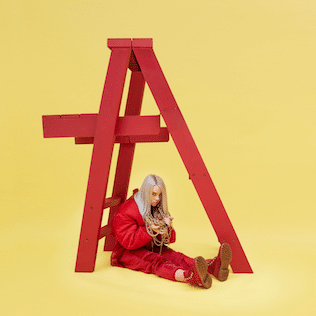
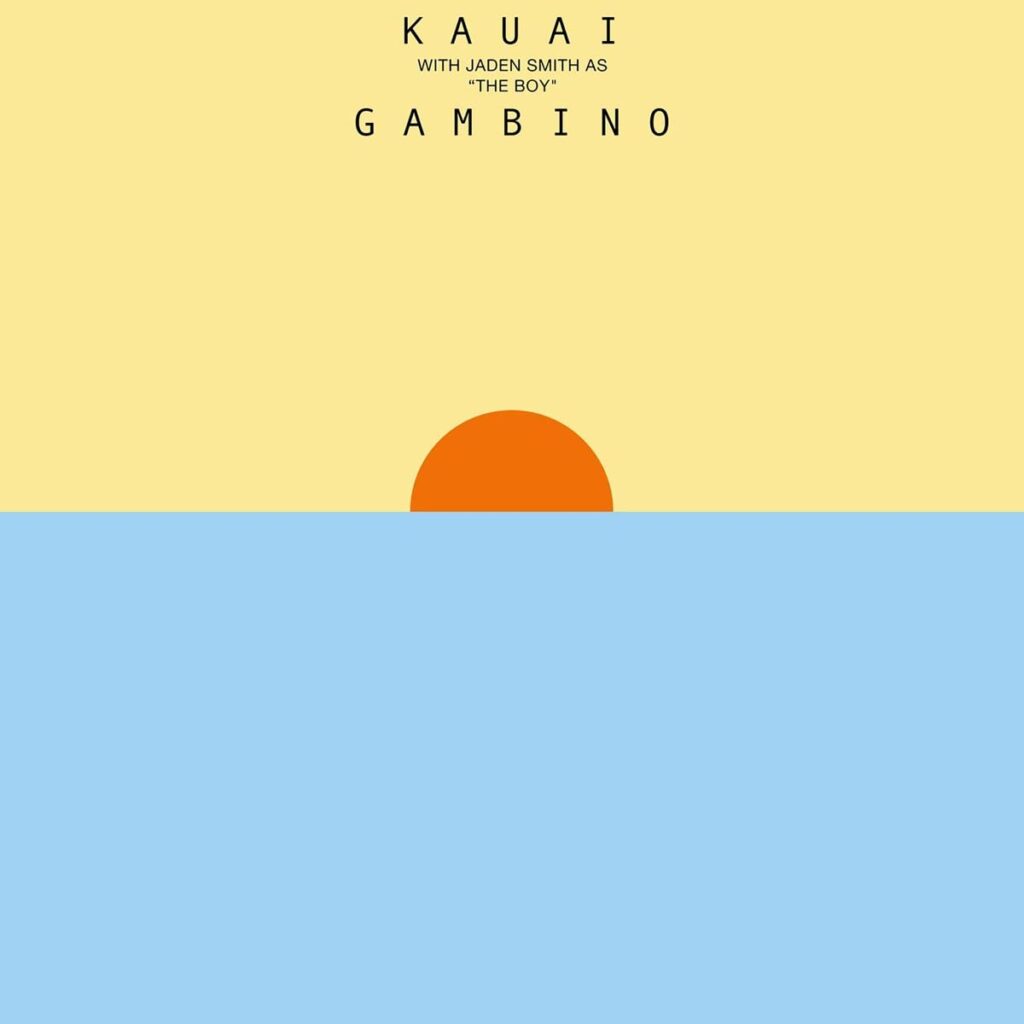
Investing in thoughtful, high-quality artwork not only enhances your EP’s appeal but also helps your music stand out in an increasingly visual world.
5. Distribute Your EP
Getting your EP onto major platforms and into the hands (and ears) of your audience is a vital step in the release process. A smooth and strategic distribution plan ensures your music is accessible everywhere your listeners are.
Choose a Distribution Service
To make your EP widely available, partner with a trusted music distribution service:
- Popular Options: DistroKid, TuneCore, CD Baby, or AWAL are excellent choices for getting your music onto platforms like Spotify, Apple Music, Amazon Music, and YouTube Music.
- Fee Structures: Compare services based on pricing (e.g., flat fees vs. percentage-based royalties) and features like analytics or playlist pitching tools.
Ensure Metadata Accuracy
Accurate metadata helps listeners find your music and ensures you get paid properly:
- Double-check track titles, artist names, album credits, and release dates.
- Include proper genre tags and descriptive keywords to increase visibility.
Consider Global Distribution
Many distribution platforms offer options to release your music worldwide:
- Ensure your EP is available in key markets, including emerging regions like Latin America and Asia.
- Consider translation services for your metadata or descriptions to reach non-English-speaking audiences.
Set Up Pre-Save Campaigns
Pre-save links allow fans to add your EP to their libraries before release:
- Use services like Feature.fm or Show.co to create pre-save campaigns for Spotify, Apple Music, and other platforms.
- Promote these links via your website, social media, and email list.
Release on Multiple Formats
While digital platforms are essential, don’t overlook other distribution methods:
- Physical Media: Vinyl or CDs can appeal to collectors or superfans.
- Bandcamp or Direct Sales: Offer your EP for direct download or as part of exclusive bundles.
Time Your Distribution
Give your distribution service adequate time to process your release:
- Submit your EP at least 3–4 weeks before your intended release date to ensure it’s live on all platforms.
- Use this lead time to pitch your EP to playlists and prepare promotional materials.
Distribute Your EP with DistroKid
Once your EP is complete, make sure it’s available on all major streaming platforms. DistroKid is a trusted music distribution service that helps you share your music with the world quickly and affordably.
Special Offer: Sign up for DistroKid through our affiliate link and start distributing your music today.
Monitor and Adjust
After your EP is live:
- Track performance data provided by your distributor, such as streams, downloads, and geographic reach.
- Use this data to refine your future releases and promotional strategies.
6. Promote Your EP
Promotion is the key to ensuring your EP reaches the right audience and gains the recognition it deserves. By combining pre-release buzz, an engaging launch, and thoughtful post-release strategies, you can maximize your EP’s impact.
Build Anticipation Before Release
- Tease Your Audience: Share sneak peeks, lyrics, or behind-the-scenes content leading up to the release.
- Release Singles: Drop one or two tracks ahead of the EP to generate excitement and give listeners a taste of what’s to come.
- Encourage Pre-Saves: Promote pre-save links on streaming platforms to boost visibility and ensure fans are ready to listen on release day.
Make Release Day Special
- Host an Event: Organize a virtual listening party or live Q&A session to celebrate the launch with fans.
- Engage on Social Media: Share posts, stories, and reels highlighting the release and thanking fans for their support.
- Personal Insights: Offer fans a deeper connection by sharing stories about the creation of your EP.
Keep the Momentum Going
- Submit to Playlists: Pitch your tracks to Spotify editorial playlists and independent curators to increase your reach.
- Celebrate Milestones: Share updates about your EP’s performance, such as streams, downloads, or playlist placements.
- Follow-Up Content: Release remixes, acoustic versions, or music videos to keep the EP fresh and relevant.
- Engage Your Audience: Respond to comments, DMs, and fan feedback to maintain a strong connection.
With the right promotion, reliable distribution, and professional production, your EP can leave a lasting impression and take your music career to new heights. The world is ready to hear what you’ve created—make it unforgettable!
Finish Your EP with Professional Mixing and Mastering
Your EP deserves the best possible sound to make an impact. At Twisby Records, we specialize in mixing and mastering services tailored for artists like you. Whether you’re looking to refine your tracks or add the final polish, we’re here to elevate your music to professional standards.
- Why Work With Us? We understand the needs of independent musicians and focus on delivering quality and affordability.
- Remote Collaboration: Work with us from anywhere and get the results you need without leaving your studio.

